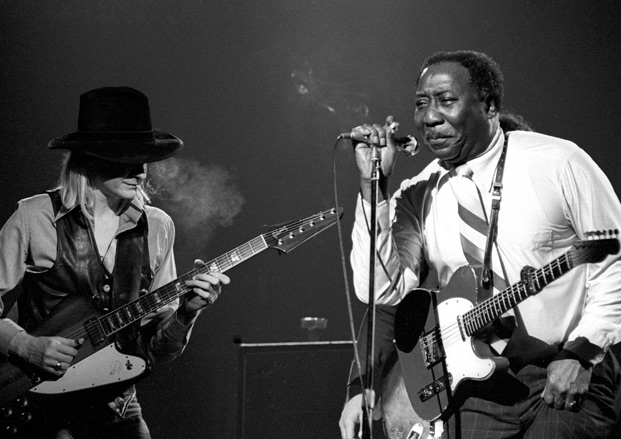Mastering the Wild Style of Guitar Legend Johnny Winter, Part 1

On July 16, 2014, the world lost one of the greatest and most influential guitarists ever: Johnny Winter.
Born in Beaumont, Texas, on February 23, 1944, Winter, who was born with albinism, stood out not only for this unusual fact but, more importantly, because of his virtuoso, high-octane, one-of-a-kind guitar playing and his wild, banshee-like vocal prowess.
Johnny’s screams of “Rock and Roll!!!” are now regarded as essential to the fabric of blues and rock as Chuck Berry’s “Johnny B. Goode” double-stops and Albert King’s stinging, emotive string bending.
In this edition of In Deep, we’ll examine just one of the many facets of Johnny’s blues guitar mastery: fingerpicked country-style blues applied to the electric guitar.
Though Johnny’s ascent to stardom was fueled by the blues-rock hit songs “Rock ‘n’ Roll, Hoochie Koo” and “Still Alive and Well,” his true love was the blues, and following his 1977 release, Nothing But the Blues, he devoted himself to that genre for the rest of his career. One of his crowning achievements was his late-Seventies association with one of his personal heroes, Muddy Waters, for whom Johnny produced four Grammy-winning LPs, Hard Again, I’m Ready, Muddy “Mississippi” Waters Live and King Bee.
The latter album features a fantastic slow blues, “Forever Lonely,” and on this track, Johnny demonstrates his mastery of fingerpicked Delta-style blues. The examples in this column are intended to demonstrate this style.
Johnny always played with a thumb pick, which is very uncommon for the great majority of blues and blues-rock players. The best way to emulate his sound when not using a thumb pick is to employ hybrid picking, using a both a flatpick and the bare fingers to pick the strings, either together or in opposition. The lower strings are generally attacked with the flatpick, and the higher strings are picked with the middle and ring fingers, with the pinkie occasionally used too.
The examples here are played in the key of A, and FIGURE 1 represents a typical opening four-bar phrase that starts on the five chord, E7, then moves to the four chord, D7 before resolving to the one chord, or tonic, A7. The figure begins with ascending double-stops, sixths apart, that are sounded on the G and high E strings.
Flatpick the notes on the G string and fingerpick the high E-string notes with either the middle or ring finger, allowing all of the notes to ring together as long as possible. In bar 2, a Delta-style voicing of D7/F# is approached by “walking up” chromatically from the open low E note to F# at the second fret. In bar 3, sixths double-stops descend the D and B strings while a high A pedal tone is sustained on top (a classic Robert Johnson–style turnaround move). FIGURE 2 is a 12-bar passage inspired by the verse section from the aforementioned “Forever Lonely.”
Notice the unusual chord voicings for A9 and A6 in bars 2 and 3. In bar 4, the A7 shape on the top three strings moves down one fret, to Adim7, before returning to A7 (another classic blues move). The reminder of this rhythm part is built around shapes and phrases similar to those introduced in FIGURE 1. Next month, we will continue our tribute to Johnny’s incredible, multifaceted playing style.

Get The Pick Newsletter
All the latest guitar news, interviews, lessons, reviews, deals and more, direct to your inbox!
Guitar World Associate Editor Andy Aledort is recognized worldwide for his vast contributions to guitar instruction, via his many best-selling instructional DVDs, transcription books and online lessons. Andy is a regular contributor to Guitar World and Truefire, and has toured with Dickey Betts of the Allman Brothers, as well as participating in several Jimi Hendrix Tribute Tours.
“There are so many sounds to be discovered when you get away from using a pick”: Jared James Nichols shows you how to add “snap, crackle and pop” to your playing with banjo rolls and string snaps
Don't let chord inversions bamboozle you. It's simply the case of shuffling the notes around








![Joe Bonamassa [left] wears a deep blue suit and polka-dotted shirt and plays his green refin Strat; the late Irish blues legend Rory Gallagher [right] screams and inflicts some punishment on his heavily worn number one Stratocaster.](https://cdn.mos.cms.futurecdn.net/cw28h7UBcTVfTLs7p7eiLe.jpg)


